
The ringlet is a butterfly in the family Nymphalidae. It is only one of the numerous "ringlet" butterflies in the tribe Satyrini.

The burnet companion moth is a moth of the family Erebidae. It is found in most of the Palearctic realm, from Ireland in the west to Mongolia and Siberia in the east and south to the Mediterranean and North Africa.
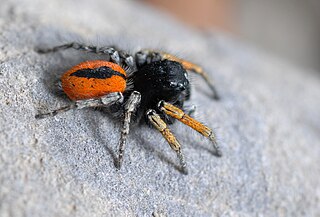
Philaeus chrysops is a species of jumping spider (Salticidae).
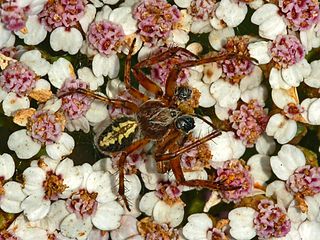
Aculepeira ceropegia, the oak spider, is an orb-weaving spider species belonging to the family Araneidae.
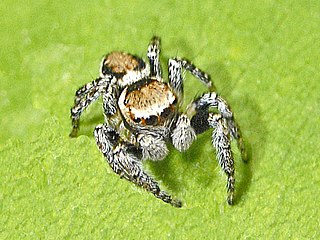
Evarcha falcata is a species of 'jumping spiders' belonging to the family Salticidae.

Coenonympha arcania, the pearly heath, is a butterfly species belonging to the family Nymphalidae.

Calopteryx haemorrhoidalis is a species of damselfly in the family Calopterygidae known by the common names copper demoiselle and Mediterranean demoiselle.

Setina aurita is a moth of the family Erebidae. It was first described by Eugenius Johann Christoph Esper in 1787.

Libelloides coccajus, the "owly sulphur", is an owlfly species belonging to the family Ascalaphidae, subfamily Ascalaphinae.
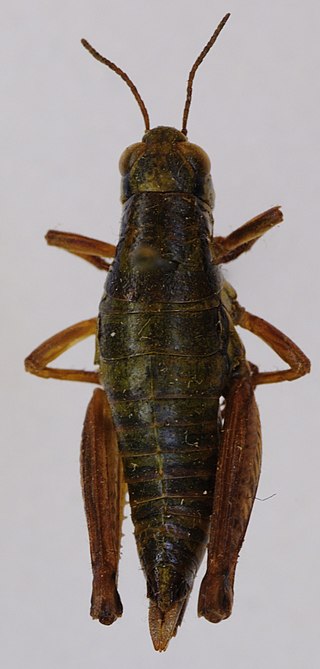
Pseudoprumna baldensis is a monotypic species of grasshopper in the subfamily Melanoplinae and tribe Podismini.

Hedychrum nobile is a species of cuckoo wasps.
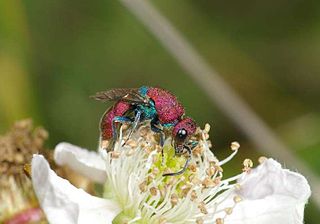
Chrysura cuprea is a species of cuckoo wasps.
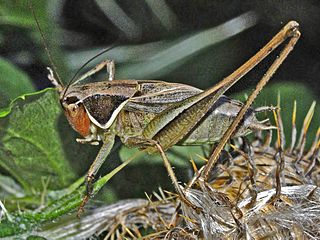
Sepiana sepium, common name sepia bush-cricket, is a species of bush crickets belonging to the tribe Platycleidini and genus group Platycleis. It is the only species within the monotypic genus Sepiana.

Leptophyes laticauda is a species of bush-crickets belonging to the family Tettigoniidae.

Oberea pupillata is a species of beetle in the family Cerambycidae. It was described by Leonard Gyllenhaal in 1817, originally under the genus Saperda.

Laphria flava, the bumblebee robberfly, yellow robberfly or yellow assassin fly, is a fly of the Asilidae family.

Gomphocerus sibiricus is a species of insect belonging to the family Acrididae subfamily Gomphocerinae.It is found across the Palearctic east to Siberia.The main distribution area is Siberia. In Central and Southern Europe it is limited to the high mountains: Pyrenees and Sierra de Guadarrama, central and southern Apennines, Alps, Carpathians, Balkan Mountains and the Caucasus.

Tetrix subulata is a species of groundhopper known as the slender ground-hopper, awl-shaped pygmy grasshopper and the slender grouse locust. It is found across the Palearctic: in North America, across much of Europe and Asia, from the British Isles east to Siberia, and to the southern parts of North Africa.

Mylabris variabilis is a species of blister beetle belonging to the Meloidae family.

Monosapyga clavicornis is a hymenopteran from the family Sapygidae. The species is common and not endangered.





















